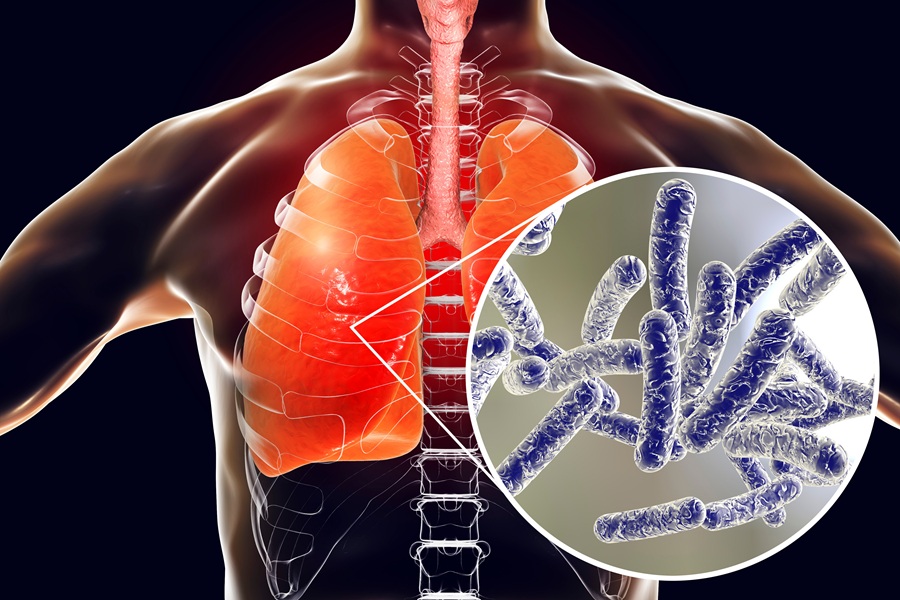
HARLEM, NY – A growing outbreak of Legionnaires’ disease in Central Harlem has now claimed at least three lives and sickened more than 65 people, prompting renewed concern across the greater New York City area, including Long Island, about how the disease spreads and whether the conditions that caused this outbreak could be present elsewhere.
Health officials in New York City confirmed that the source of the Harlem outbreak has been traced to 11 contaminated cooling towers, all of which tested positive for Legionella pneumophila, the bacteria that causes Legionnaires’ disease. The impacted area includes ZIP codes 10027, 10030, 10035, 10037, and 10039, where the majority of cases have been concentrated since July 25.
What Is Legionnaires’ Disease?
Legionnaires’ disease is a serious form of pneumonia caused by breathing in aerosolized water droplets containing the Legionella bacteria. It is not spread person to person, and instead typically originates from large building systems such as air conditioning units, cooling towers, fountains, and plumbing networks. Symptoms often include high fever, coughing, muscle aches, shortness of breath, and in some cases, gastrointestinal distress.
The illness can be deadly, particularly for people over the age of 50, smokers, or those with weakened immune systems or chronic lung conditions.
Is Long Island at Risk?
Although the Harlem outbreak is contained within a specific cluster of cooling towers in Manhattan, health experts warn that the same environmental conditions could trigger similar outbreaks elsewhere, including on Long Island.
Long Island’s many hospitals, high-rise buildings, schools, retirement communities, and commercial centers all rely on large-scale HVAC and water systems that, if improperly maintained, could harbor Legionella bacteria. Warm summer weather, stagnant water in underused systems, and aging infrastructure can all increase the likelihood of bacterial growth.
While there is no current outbreak on Long Island, past incidents in New York, including the deadly 2015 outbreak in the Bronx, show how quickly the situation can escalate if not swiftly detected and addressed.
What Authorities Are Doing
New York State requires building owners to register, inspect, and regularly disinfect cooling towers and certain water systems under Department of Health regulations passed after earlier outbreaks. In the Harlem case, city officials confirmed that all contaminated towers have now been remediated.
Long Island municipalities also fall under these guidelines, and property owners are expected to be in full compliance, especially during summer months when risk increases.
Residents with concerns about buildings they live or work in are encouraged to contact local building management or municipal health departments.
What You Can Do
According to the CDC and New York State health officials, tap water remains safe to drink, cook with, and bathe in, even in affected areas. Legionnaires’ disease is not contracted by drinking water, but by inhaling tiny airborne droplets containing the bacteria.
Early treatment is critical, and the disease is generally treatable with antibiotics when caught promptly. Anyone experiencing severe flu-like symptoms, especially if they live or work near large building complexes or cooling towers, should seek medical attention.
Looking Ahead
While the Harlem cluster appears to be under control, its spread has triggered important reminders about proactive maintenance and public health vigilance. Long Island, with its vast infrastructure and seasonal population shifts, must remain alert — especially during hot, humid months when Legionella is most likely to thrive.
The current outbreak may be isolated geographically, but the risk is regional. As urban environments across New York continue to age and climate conditions intensify, Legionnaires’ disease remains a preventable but persistent threat, and one that Long Island must take seriously.
Top Questions About Legionnaires’ Disease and the Harlem Outbreak
1. What is Legionnaires’ disease?
Legionnaires’ disease is a serious form of pneumonia caused by inhaling water droplets that contain the Legionella bacteria. It is not contagious between people and typically spreads from contaminated water systems.
2. How did the Harlem outbreak happen?
Health officials traced the outbreak to 11 cooling towers in Central Harlem that tested positive for Legionella pneumophila. These towers have since been disinfected and brought into compliance.
3. Could it spread to Long Island?
While it won’t spread directly from Harlem to Long Island, a separate outbreak could occur if a local cooling tower or water system becomes contaminated. Each outbreak is localized, but the environmental risk exists anywhere with large-scale HVAC or water infrastructure.
4. Is Long Island tap water safe?
Yes. Legionnaires’ disease is not contracted by drinking water. Tap water remains safe for drinking, bathing, and cooking. The risk comes from inhaling aerosolized water, usually in mist form from showers, cooling towers, or fountains.
5. Who is most at risk?
Adults over 50, smokers, people with chronic lung disease, and those with weakened immune systems are at the highest risk of developing severe illness from Legionnaires’ disease.
6. What are the symptoms to watch for?
Common symptoms include high fever, chills, coughing, muscle aches, shortness of breath, and sometimes diarrhea or confusion. Symptoms typically appear 2 to 10 days after exposure.
7. What should I do if I think I have it?
Seek medical attention right away. Legionnaires’ is treatable with antibiotics, and early treatment significantly improves outcomes.
8. How can building owners on Long Island prevent it?
Property managers should ensure that cooling towers, plumbing systems, hot tubs, and decorative fountains are regularly cleaned, tested, and disinfected. New York State requires registration and maintenance of cooling towers under state health laws.
9. Has this happened before in New York?
Yes. A major outbreak occurred in the Bronx in 2015, leading to over 120 infections and 12 deaths. That outbreak led to new health regulations for building water systems.
10. Where can I get updates or more information?
For updates and public guidance, visit the NYC Department of Health or the CDC Legionella resource page. Local residents can also contact their town’s health department for Long Island-specific concerns.


